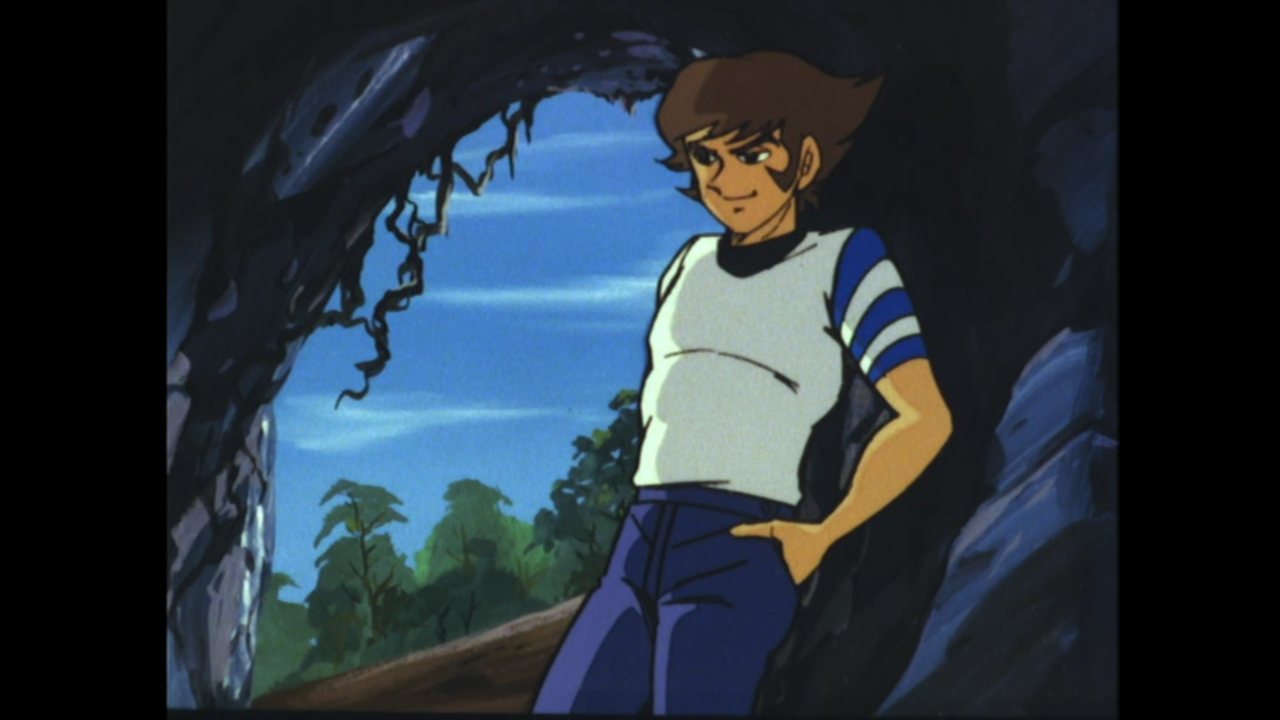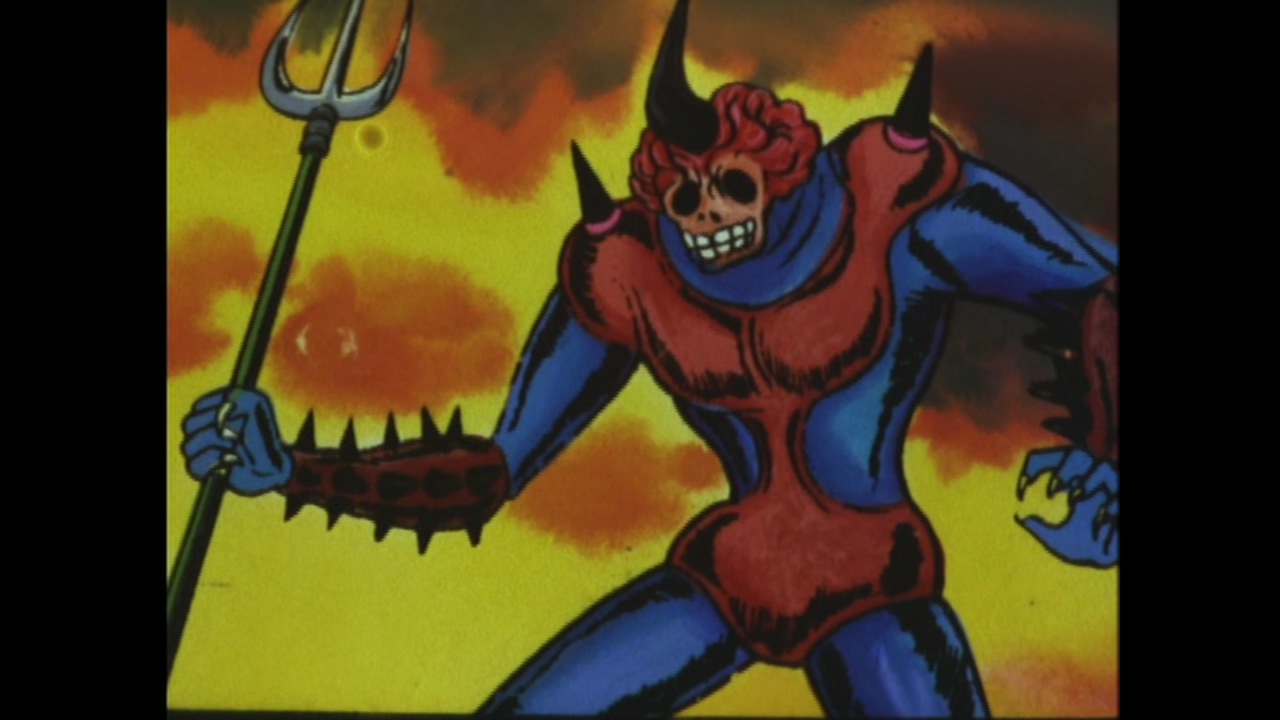As discussed earlier in my Zero Frights Introduction and my Mao Dante Review the original 1972 Devilman anime played a key role in the creation of the franchise as a whole. The short version
for the uninitiated is that executives over at Toei animation wanted to create a series based around Nagai’s earlier Mao Dante (aka Demon Lord Dante) manga but with changes to make it more appropriate for television and
a hero with a more humanoid appearance. Nagai felt that instead of just tweaking the earlier Mao Dante into something else he should start fresh and this is how he took similar elements from Mao Dante reworked them and created
the new series Devilman.
Nagai oversaw the production of the TV series and was invested in it greatly but would later put most of his attention into his own manga version that he controlled himself. Eventually the
two projects diverged and became wildly different. This was due in part to Nagai’s freestyle writing without any planning ahead as well as how he felt the audience for the magazine in which his manga was serialized under
was much older than an audience that would watch television anime making him feel a need to up the maturity level of his work.
Some of the major characters from the manga not present in the anime came about because of these reasons, with the biggest example being the character Ryo Asuka whom was a key component to
the manga but noticeably absent in the anime. Go Nagai conceived of Ryo much too late in the production cycle for the anime to incorporate him into their version, much to the dismay of some of the staff whom loved the character
and felt he would have been a fantastic addition to the anime version. The anime seemed to try its hand rather hard from that point to create its own hand similar character, first with the rival character Iwao
Himura and later with the demon Dorango, former friend turned foe.
It’s the intended audience that is the biggest difference between the two works, however, and goes much deeper than just missing characters. The television anime was conceived to
thematically be about evil vs evil, with the villainous demon Devilman assuming the role of the now deceased Akira Fudo and falling in love with the “goddess” Miki Makimura. Instead of spreading
death and destruction like originally intended Devilman fights to protect Miki and her family because of this love he now harbors even though it meant fighting the very evil forces he was once part of. Eventually we watch Devilman
grow as a better person--he mellows out and loses some of that sharp edge he used to have, and noticeably carries a deeper respect for ideals like love and friendship. This is very much at odds with the strong anti-war message
of the manga where humans assume demonic forms and power being a message for war drafting and arming young people with weapons. The second the protagonist Akira Fudo lets the demon Amon possess him he is throwing away his innocence
and arming himself with a weapon. Hate begets more hate and the cycle becomes increasingly violent until eventually things go too far. Devilman the anime sees concepts like justice and love winning out in the end where as
Devilman the manga sees a world where violence carries heavy consequences.
The Devilman manga is a story with a deeper meaning meant to be interpreted through its pages and it’s easy to look at that and feel the original 1972 anime just doesn't belong
with its typical tokusatsu superhero monster-of-the-week formula, which is why it has a bad rap amongst some fans. This however is pretty unfair as the 1972 anime series is thoroughly well crafted and written. Scenario writer
and novelist Masaki Tsuji oversaw much of the writing for the anime and produced incredibly solid scripts for the series. Tsuji was a huge writer at the time and wrote a large amount of episodes for an extensive amount of
now legendary TV series such as Astro Boy, GeGeGe no Kitaro, Cyborg 009, Tiger Mask, Dokonjo Gaeru, Babel II, Dr Slump, and Giant Gorg--just to name a few.
Putting aside the manga, and what the franchise later evolved into--after all there was no franchise at this point--the original 1972 Devilman is a great 70’s superhero series that
really deserves more love from the fans. Devilman’s multiple powers are all fun with cheesy names like Devil Cutter, Devil Eye, and Devil Beam (that the catchy opening song of course explains), and he posses the ability
to grow into a giant much like Ultraman. Fights are dynamic and even a bit bloody at times, but the best aspect by far, however, is the fun monsters-of-the-week themselves. These demons typically looked grotesque and often
used underhanded and sometimes actually scary methods to fight Devilman. A lot of the demons in the original manga made an appearance here and they are all great enemies for Devilman to fight. The general horror themed based
animation really just started by this point on Japanese television as GeGeGe no Kitaro only just aired 4 years prior, so you can see the yokai boom in full effect.
The 1972 Devilman anime is one of my personal favorites from this era and anyone that enjoys older tokusatsu shows or are looking for some horror in their cheesy monster-of-the-week romps
can easily fall in love with this series. I always was really fascinated with the series just for the fact that it stars the demon (not yet named Amon) instead of Akira Fudo as well. That difference is just so interesting
in retrospect for the franchise and puts a whole other spin on much of the later created content. There’s also obvious Mao Dante trappings left behind that are a lot of fun to notice for long time fans as well; such
as the demons all living in a frozen wasteland and being sealed in ice for thousands of years, the character Zannin who is blatantly just a reused Zennon from Mao Dante, and the ruler of the villainous Demon Tribe looking very
much like a silhouette of Mao Dante himself as well as (kind of confusingly) being named Zennon.
The series as of late as found a renewed interest thanks largely in part to the many lovingly placed references to it in the brand new Devilman Crybaby. Thankfully it is incredibly easy
to get a hold of nowadays as well because of Discotek releasing it on DVD (you know I was there on Day-1). The Discotek release contains a great translation that is easy to understand which is a huge improvement over the old
days where I watched the series with bootleg English subtitles that were pretty questionable and always refereed to Devilman as Debiman (I like to think this was his nickname because he ate one too many Little Debbie snacks). With such a huge milestone as Go Nagai’s 50th anniversary this year and all the recent releases for Devilman in North America from Netflix to the many newly released
manga, maybe now the original anime can finally get some more love too.





